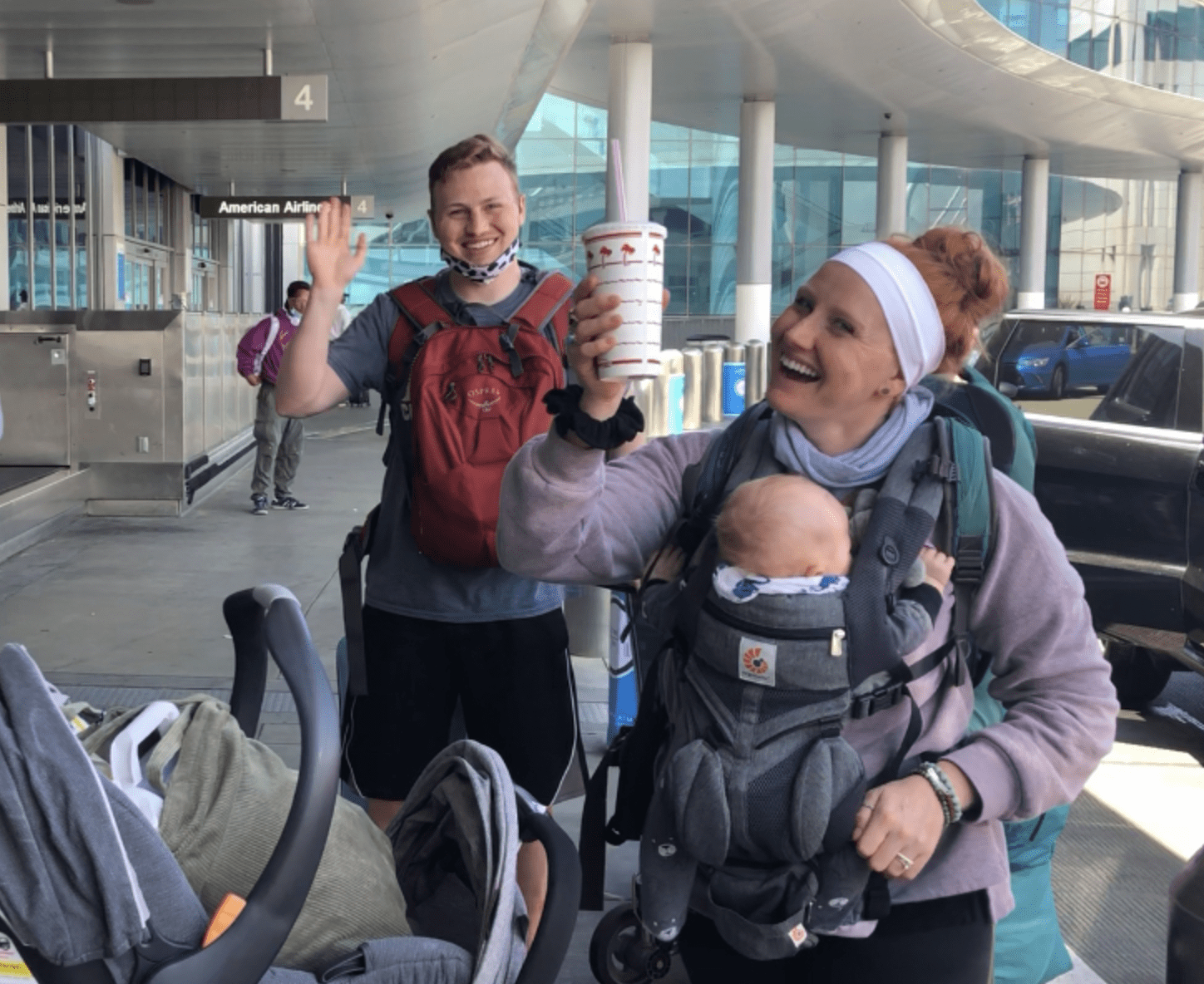How I Almost Had an Anxiety Attack at the Airport (And What Helped)
Episode 81: Spotify | Apple Podcasts | YouTube
View transcript on Buzzsprout
Let’s talk about the anxiety attack I *almost* had at the airport earlier this summer. Warning, this episode takes you on the journey with me detail by detail, so if you’re already feeling a little worked up today, maybe come back to this saga later when my airport stress won’t increase your stress but can instead be simply a chaotic story you get to listen to for your education & entertainment purposes.
In this Amanda shares how her nervous system regulation tools helped her navigate the chaotic travel day that almost spiraled into an anxiety attack. With humor, honesty, and education, this story illustrates how regulation isn’t about avoiding stress, but moving through it.
What We Cover in This Episode
- The difference between an anxiety and panic attack
- How accumulated stress can lead to a “sudden” meltdown
- Why we experience the same situation differently from others
- How Amanda used regulation tools in real-time at the airport
- The mindset shift that helped her reframe the experience
Understanding the Difference: Anxiety vs. Panic Attacks
Amanda starts with an important clarification: panic attacks come on suddenly and intensely, often without clear cause. Anxiety attacks, on the other hand, tend to build gradually. While the DSM-5 only formally recognizes panic attacks, many people use both terms interchangeably. Recognizing the difference can help you identify what’s happening in your body—and which tools might be most helpful.
The Backstory Matters: Accumulated Stress and the Full Bucket
This story isn’t just about one chaotic morning at LAX. It starts ten days earlier, with a family vacation that turned into a string of illness, stress, and emotional drama. By the time Amanda reached the airport, her nervous system had already been running high. This accumulation of stress set the stage for her reaction—not because she was fragile, but because her stress bucket was already full.
Real Life Regulation: From Near Breakdown to Managing Activation
From ticketing chaos to crying toddlers and last-minute gate changes, Amanda narrates the story of almost missing her flight with humor and vulnerability. She felt the buildup of activation—shaking hands, tears, spiraling thoughts—but this time, she didn’t spin out. She credits years of work increasing her capacity to be with discomfort, rather than trying to eliminate it.
Body First, Mind Second: Resetting After a Stress Spike
Once seated on the plane, Amanda intuitively moved through her personal regulation tools: deep breaths, vision drills, light touch to activate the vagus nerve, and finally, mindset work. She reminds us that regulation isn’t about always being calm. It’s about recognizing when we’re activated and knowing how to support our system back into safety.
Different Nervous Systems, Different Reactions
One of the key takeaways from Amanda’s story is how differently she and her husband experienced the same situation. What felt like a game to him, felt like a full-body shutdown to her. This difference doesn’t mean one of them was right or wrong—it points to how our histories, beliefs, and current capacities shape our reactions. And that awareness? It’s a game-changer.
Before we move into takeaways, Amanda reminds us that healing isn’t about controlling the chaos around us. It’s about increasing our capacity to stay grounded within it. Life will happen—but we can meet it differently.
Three Tangible Takeaways
- Your state shapes your story: The way you interpret stressful events changes depending on whether your body is regulated or dysregulated. Check in with your body before spiraling with your thoughts.
- You can increase your capacity: Amanda didn’t avoid the stress—she managed it. And that’s what years of nervous system work can do. You won’t eliminate activation, but you can learn to hold it.
- Same situation, different systems: Your response isn’t wrong just because someone else reacts differently. Whether it’s a friend, partner, or stranger—our stress responses are shaped by more than just the moment.
Looking for more personalized support?
- Book a FREE discovery call for RESTORE, our 1:1 anxiety & depression coaching program (HSA/FSA eligible & includes comprehensive bloodwork)
- Join me inside the Regulated Living Membership, a mental health membership and nervous system healing space (sliding scale pricing available)
- Join my Release Class – Monthly guided nervous system regulation class
- Order my book, Healing Through the Vagus Nerve today!
- Download free resources here
*Want me to talk about something specific on the podcast? Let me know HERE.
Disclaimer: This article is for informational purposes only and is not a substitute for professional medical advice, diagnosis, or treatment. Always seek the advice of your physician or qualified mental health provider with any questions you may have regarding a medical condition.

Leave a Reply Cancel reply
A mental health newsletter that feels like a deep breath: simple, grounding, and here to remind you that healing is possible.
The Weekly Rewire
Navigate
Regulated Living provides neuroscience-backed mental health coaching to help you regulate your nervous system and reclaim your life from anxiety and depression.
Heal
Learn
Paragraph